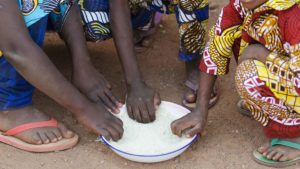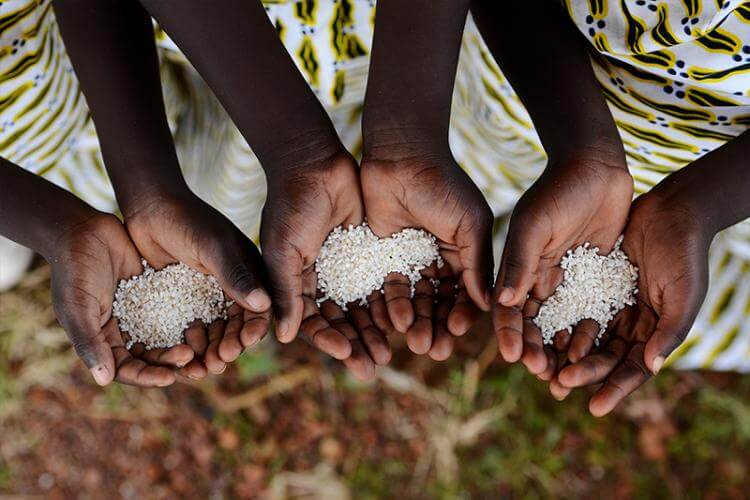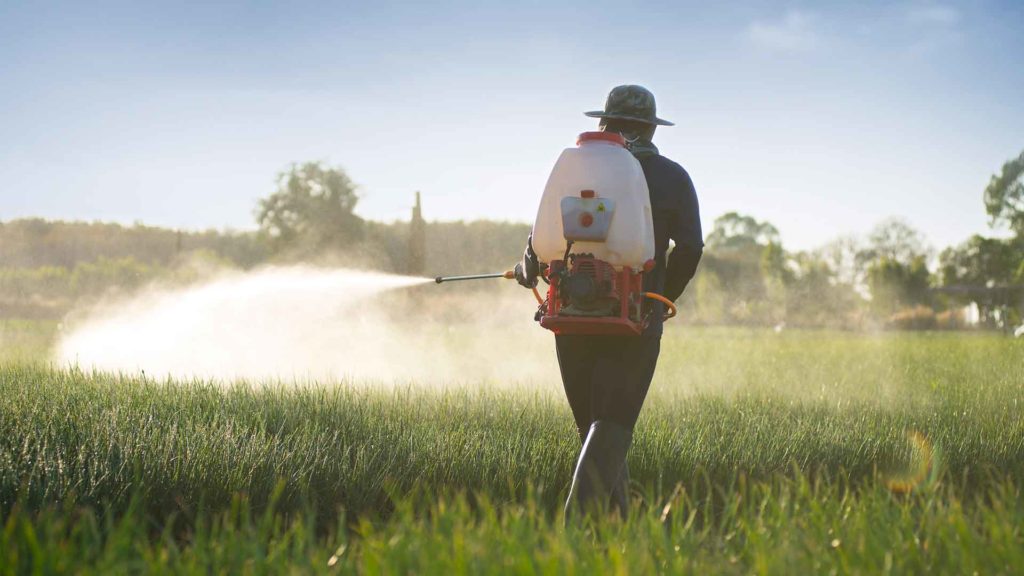
Food security is a complex issue that has many dimensions. There is scope for exploring the different facets of food security and discuss how it affects people across the world. Food insecurity can lead to health problems, poverty, and even death.
Food and Agriculture Organization (FAO) – What are FAO’s policy priorities for addressing these issues, focusing on food security in protracted crises?
What is Food Security?
“Food security exists when all people, at all times, have physical and economic access to sufficient, safe and nutritious food that meets their dietary needs and food preferences for an active and healthy life”. (World Food Summit, 1996)
The World Food Summit defines food security as the state in which all people have physical and economic access to sufficient, safe, and nutritious food. There are different dimensions of food security:
- accessibility (physical availability),
- stability (food can be affordable at all times),
- quality (nutritious foods that meet dietary needs),
- safety (the absence of harmful substances such as pesticides or bacteria).
Certain populations are more vulnerable than others when it comes to hunger. Consider children under five years old, women during pregnancy and lactation periods, elderly persons over 65 years old.
Food insecurity leads to health problems including anemia from iron deficiency. It is also a common reason for stunted growth due to lack of protein intake for extended periods. Additionally, it also affects mental health. Food insecurity can lead to frustration, humiliation, and powerlessness.

FAO policy approach and strategy
The FAO’s strategy is to work with the UN system. They want to act as a whole to adopt sound policies for eradicating hunger. The overall strategy also includes programs on social protection safety nets, increasing agricultural productivity (where possible), and access to markets. All of these contribute towards food security.
Some key policy priorities from the Food Security & Protracted Crisis Policy Paper include:
- reducing inequalities through investing in agriculture;
- reforming trade rules so that they deliver better outcomes for small-scale farmers;
- securing global food supplies by expanding production capacity while minimizing negative impacts on local communities.
The Food Security Policy approach policies are set. The political commitment to food security is sustainable over time through a range of measures, including agricultural development, social protection for the vulnerable, access to markets, and trade reform.
Dimensions of Food Security
Food security is about the availability of sufficient quantity and a reliable system for distribution to those who need it to lead a healthy life with dignity (FAO). There are at least four dimensions of food security: availability (amounts available), accessibility (affordability or reach), and stability/safety from sudden disruption.
Availability
The amount of food available to a population is not only the most basic determinant of food security. But it is also one that is often neglected in national assessments. The amount of food available in an economy can be measured by looking at per-capita calorie availability. Food security is about more than just access and consumption. It also encompasses stability over time, which includes distributional issues such as how much people spend on their diet relative to what they earn.
Accessibility/Affordability
Food security is threatened by a combination of high prices, lack of purchasing power, and the unavailability of food. In some regions, inappropriate climate conditions also threaten and affect the production potential for locally consumed foods. The incidence of these conditions varies geographically.
It often depends on natural disasters such as floods, droughts, hurricanes, or earthquakes. Access to food is constrained because people do not have sufficient income with which to buy it at market price. They may be too poor to invest in agricultural inputs necessary for higher yields. Or their labor cannot produce enough surplus from agriculture to earn incomes outside the sector. Sometimes, they may not have access to appropriate technology, or there may be a lack of markets for the sale of surplus production.
Utilization
Food security is addressed in the UN 2030 Agenda with its Sustainable Development Goals. One way to help solve food insecurity is through the utilization of food waste. For example, according to the World Bank’s Food Waste Reduction Alliance (FWRA), 2/3 of all fresh fruit and vegetables go uneaten. That is about 1.4 billion tons per year.
The FWRA estimates that by reducing global food waste, we can feed up to one billion people each year with enough calories for a healthy life. To accomplish this goal, will require collaboration from individuals on local levels as well as governments across the globe. However, there are steps from buying “ugly” produce to composting and recycling. There are many ways you can help alleviate the food waste issue.
Stability
The stability of food is one of the most important factors for any population to thrive in today’s world. There is a need for a reliable source of food that becomes increasingly evident. Since more and more people are living in urban areas. Urban agriculture has been on the rise over recent years as more citizens move to cities and global climate change has increased droughts across certain regions. The benefits of this rising trend include not only increasing sustainability. But it also improves public health through access to fresh produce as well as reducing carbon emissions from transportation costs.
Food security concepts and policies
FAO estimates that about one in every eight people suffers from hunger. Food insecurity is a continuum of severity. In the end, is of it is famine and on the other side are frequent episodes of household food shortages.
The overall strategy of FAO to promote better access to food among populations affected by protracted crises includes five priority areas:
- strengthening resilience,
- improving knowledge management,
- promoting gender equity and empowering women and girls;
- ensuring accountability for government commitments;
- enhancing international cooperation.
Food Security and Protracted Crisis

When food security is severely compromised, conflict over resources or economic disruption may last for many years. FAO policy priorities help governments focus on long-term considerations. They design policies aimed at addressing current emergencies. To this end, FAO is working with countries in protracted crises (such as those found in Haiti, Afghanistan, Somalia).
Firstly, they provide the necessary data to assess their food situation. Then, FAO helps to coordinate international assistance efforts. Next, they advise how best to exploit humanitarian assistance opportunities while making sure people remain engaged in productive activities. Finally, they aid the development of coordinated responses across sectors.
The FAO has also found that the more protracted a crisis is, the higher chance there is for food insecurity to occur. This is attributable to shortages in income or assets. It is also due to ineffective responses from government institutions which leads people into hunger traps of poverty. Here they are unable to afford food due to financial constraints.
Social Protection
Developing countries without social protection systems rely on international humanitarian assistance. It is the case if they cannot provide public services themselves. There should ideally be an integrated approach between rural development interventions and cash transfers. It should include pensions, unemployment benefits, or other conditional cash transfer programs. So that these two approaches work together synergistically towards eradicating extreme poverty.
Investment in Food Systems

Domestic agriculture production should also increase with increased government support from investments to build up domestic capacities. Procurement policies should ensure fair access for smallholder farmers who produce staple crops while protecting land rights. The need for a paradigm shift in agriculture to deal with climate change impacts is immense. One of the most important ways we can do this now, while also addressing other dimensions of food security, is by investing in more sustainable agricultural practices.
Ending Hunger in Our Lifetime
The challenge to achieve zero hunger in our lifetime requires radical changes that are resisted over time. But they are necessary if zero poverty or food insecurity are ambitious goals. These include strong action on social protection and public investment in rural infrastructure. It needs to help smallholder farmers improve farming technologies and access markets and reduce trade restrictions. Additionally, they should achieve universal coverage under basic social protection.
Food Wastage
Reducing food waste is the most important way to achieve a sustainable future for people, the planet, and prosperity. Preventing or reducing postharvest losses of nutritious crops can lead to better quality diets, less malnutrition, more efficient land use, and lower greenhouse gas emissions. The challenge before us with climate change is how we intensify our production while avoiding negative externalities on water availability. Techniques such as precision agriculture that require automated monitoring help to optimize agricultural efforts.
Final thoughts
FAO is working tirelessly to identify and implement food security policies that contribute to a world where all people have access to safe, nutritious, and sufficient food.






